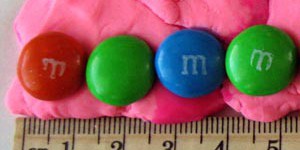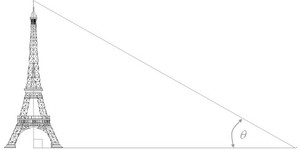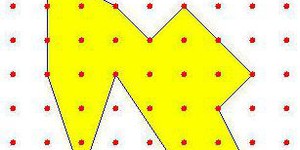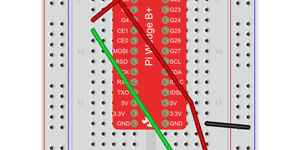Fifth Grade, Pure Mathematics Science Projects (14 results)
Wikipedia defines mathematics as "the study of quantity, structure, space and change." With a definition like that, it's easy to see why math is often called "the language of science." Math is essential for analyzing and communicating scientific results, and for stating scientific theories in a way that is clear, succinct, and testable.
|
Select a resource
Coding Projects
Sort by
|
It has been said that, "Life is like a box of chocolates—you never know what you're going to get" (Forrest Gump in Forrest Gump, 1994). In this science project you can test the "Forrest Gump Chaos Theory" by using M&M's®, which are much cheaper than a box of chocolates. What if life is more like a bag of M&M's? Find out in this science project if some things in life are predictable by using the awesome power of statistics.
Read more
Have your parents ever found you munching on candy and asked you, "How much candy did you eat?" Instead of saying, "I do not know?" and getting in trouble, maybe you would rather say, "I ate precisely 10.7 cubic centimeters of candy, Mom." Make your parents proud of their candy-eating genius child (you) with this simple science project.
Read more
New
Can AI understand human language? In the future, AI could aid in emergency interpretive service in the hospital when translators aren't available. But can current AI algorithms understand non-verbal languages like sign language? In this science project, you will test whether AI can learn sign language gestures or phrases to see if it can be used for interpretation.
Read more
This project shows how mathematical probability sometimes contradicts our intuition. Despite the fact that there are 365 days in a year, if you survey a random group of just 23 people there is a 50:50 chance that two of them will have the same birthday. Don't believe it? Try this project and see for yourself.
Read more
You're playing Monopoly with a friend, and you've already got Park Place and you really, really want to get Boardwalk. If you're on Pacific Avenue, what are the chances you'll reach your goal? Here's an easy project that will show you how to find out.
Read more
People often draw conclusions from a small number of observations, and use those conclusions to evaluate the likelihood that an event will take place. But how easy is it to draw the wrong conclusion based on those observations? Will your predictions be accurate if an experiment is only performed a few times? The objective of this project is to determine what happens when a test with two equally-likely outcomes is performed only a small number of times.
You can test this by flipping a coin. A…
Read more
New
Are you ever annoyed by a poor Wi-Fi signal? What about when you try to send a text message, and it just won't go through because of poor cell service? Have you ever wondered what factors affect the strength of your signal and the speed of the connection? If so, this project is for you!
Read more
If you've ever wondered how tall that bridge is, or how high your kite was, then this could be a good project for you. You'll learn how you can use the mathematics of right triangles to measure the height of an object with two measurements that you can make on the ground.
Read more
Take shots at a set distance from the basket, but systematically vary the angle to the backboard. For a basic project: How do you think your success rate will vary with angle? Draw a conclusion from your experimental results. A bar graph showing success rate at different angles can help to illustrate your conclusion. For a more advanced project: Use your knowledge of geometry and basketball to come up with a mathematical expression to predict your success rate as a function of angle…
Read more
If you like to play Tetris, then you might like this project. You will learn something interesting about the mathematics of complex shapes as you try to prove Pick's Theorem.
The strange shape below is an example of a lattice polygon, which is a polygon whose vertices lie on points in the plane that have integer coordinates.
As you can see, it is a complex shape, but there is an easy way to calculate its area, by simply counting lattice points!
If you count the number of lattice points on…
Read more
Have you ever used a toy like a Spirograph® to draw precise, repeatable patterns on a piece of paper? What if you could use a computer to automatically draw the patterns for you? This project will show you how to do just that using a Raspberry Pi. Check out the video to see what this simple, but fun, project looks like.
IMPORTANT: The instructions for this project were originally written using Scratch 2 on a Raspberry Pi 3B+. If you are using a newer Raspberry Pi running Scratch 3, you…
Read more
Can you remember what the weather was like last week? Last year? Here's a project that looks at what the weather was like for over a hundred years. You'll use historical climate data to look at moisture conditions in regions across the continental U.S. You'll use a spreadsheet program to calculate the frequency of different moisture conditions for each region and make graphs for comparison. Which part of the country has the most frequent droughts? The most frequent periods of prolonged…
Read more
|











